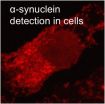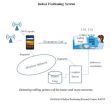(Press-News.org) Scientists from the Structural Computational Biology Group at the Spanish National Cancer Research Centre (CNIO), led by Alfonso Valencia, together with French and American researchers, have published recently two articles in the journal Nucleic Acid Research (NAR) that introduce two new databases for studying the human genome.
Living eukaryote beings are capable of generating several proteins from the information contained in a single gene. This special characteristic exists partly thanks to the alternative splicing process that selectively joins some exons (the regions of genes that produce proteins) and not others, in order to produce the proteins needed in each moment.
The articles published by Valencia study the transfer of this information, which is contained in the intermediary molecules between the genes and the proteins—the RNAs —, and which will be used to understand the genome, the way it functions and the role of some of its variants in the origin of human illnesses like cancer.
An illustrative example of the relationship between RNAs and illness is the chronic lymphocytic leukemia. Researchers from the Chronic Lymphocytic Leukemia Spanish Consortium (CLL-ICGC), of which Valencia's team forms part, have observed an accumulation of mutations in the genes responsible for the splicing process. These observations suggest that alterations in these mechanisms might be the cause of the disease.
COMPILING FUNCTIONAL DATA
One of the articles published in NAR makes the APPRIS database available to the public and contains an integrated computational system that identifies those alternative splicing protein variants that are most relevant for cells.
This new database has brought together functional variants of 85% of the human genome, which "turns it into a powerful tool for analysing specific mutations in protein variants related to illness", says Michael Tess, the lead author of the article.
The APPRIS system is part of the ENCODE international project, in which more than 400 scientists from 32 laboratories in the UK, the US, Singapore, Japan, Switzerland and Spain have taken part.
A CATALOGUE OF MORE THAN 16.000 CHIMERAS
The process of splicing becomes more complex with chimeric RNAs, which are produced by the joining of exons from different genes. The second article published in NAR explains the ChiTaRS database, in which more than 16.000 chimeric RNAs from humans, mice and the fruit fly Drosophila melanogaster are brought together.
Furthermore, ChiTaRS relates some of these chimeric RNAs to chromosome alterations that are present in different types of cancer.
The entries in ChiTaRS are incorporated into the universal UniProt Knowledgebase system (UniProtKB), that contains a broad catalogue of information on proteins from laboratories around the world.
"The RNAs and chimeric proteins have become a powerful tool for researchers over the past few years, as they can be used as new cancer markers, as well as possible targets for the generation of new drugs," says Milana Frenkel-Morgenstern, the first author of the study. This new catalogue will also help further understanding of the evolution of chimeric RNAs in eukaryotes and their functions in organisms.
###
Reference articles:
APPRIS: annotation of principal and alternative splice isoforms. Jose Manuel Rodriguez, Paolo Maietta, Iakes Ezkurdia, Alessandro Pietrelli, Jan-Jaap Wesselink, Gonzalo Lopez, Alfonso Valencia, Michael L. Tress. doi:10.1093/nar/gks1058.
ChiTaRS: a database of human, mouse and fruit fly chimeric transcripts and RNA-sequencing data. Milana Frenkel-Morgenstern, Alessandro Gorohovski, Vincent Lacroix, Mark Rogers, Kristina Ibanez, Cesar Boullosa, Eduardo Andres Leon, Asa Ben-Hur, Alfonso Valencia. doi:10.1093/nar/gks1041. END
CNIO researchers develop new databases for understanding the human genome
CNIO creates 2 new databases, APPRIS and ChiTaRS, that hold thousands of genomic variants for studying human illnesses
2012-12-17
ELSE PRESS RELEASES FROM THIS DATE:
Mental health lags behind global health and lifespan improvements
2012-12-17
A leading international expert on autism at the University of Leicester has been involved in contributing to a major new study of global health.
Professor Terry Brugha, of the Department of Health Sciences, is co-author of two papers in The Lancet's special issue on the Global Burden of Disease.
Because of his work on Autism Epidemiology, which was used to develop one new element of these global data syntheses, Professor Brugha was a co-author at the University of Leicester on two of the reports.
He said: "The most pressing issue to come out of the Global Burden of ...
Life with tics
2012-12-17
More than one in every ten schoolchildren suffers from a transient tic disorder, and 1% have a particular type of tic disorder known as Tourette syndrome. In this issue of Deutsches Ärzteblatt International, Andrea G. Ludolph of the Universitätsklinikum Ulm and her coauthors report on the available modes of diagnosis and treatment for these disorders (Dtsch Arztebl Int 2012; 109(48): 821).
Tic disorders usually take a benign course; in about 90% of patients, the tics regress spontaneously in adolescence. Specific treatment is indicated only if the tics are severe or cause ...
Rice University opens new window on Parkinson's disease
2012-12-17
HOUSTON – (Dec. 17, 2012) – Rice University scientists have discovered a new way to look inside living cells and see the insoluble fibrillar deposits associated with Parkinson's disease.
The combined talents of two Rice laboratories – one that studies the misfolded proteins that cause neurodegenerative diseases and another that specializes in photoluminescent probes – led to the spectroscopic technique that could become a valuable tool for scientists and pharmaceutical companies.
The research by the Rice labs of Angel Martí and LauraSegatori appeared online this month ...
CWRU School of Medicine researchers discover new molecule linked to late-stage breast cancer
2012-12-17
CLEVELAND -- Researchers at Case Western Reserve University School of Medicine have identified a molecule linked to more aggressive forms of breast cancer – a discovery that could point the way to potential cures.
Until this study, the ribonucleic acid (RNA) molecule called miR-181a had never before been tied to breast cancer metastasis. But when scientists found elevated levels of the molecule in late-stage breast cancer tissues, they in turn tested an inhibitor in mouse models. The approach not only prevented metastasis, but also extended the animals' lives.
"Overall, ...
GOOOAAALLL! What soccer can teach health researchers
2012-12-17
(Edmonton) Make no mistake, Alex Clark and Lionel Messi were not separated at birth.
Both might be stars in their own right, but Clark, associate dean of research in the Faculty of Nursing at the University of Alberta, realizes he's not about to woo stadiums of crazed soccer fans like FC Barcelona's all-time top scorer.
"It would probably take you about five seconds of watching Lionel Messi move the ball to work out who is the more talented soccer player; however, a lot of health research would see us as very similar," says Clark, noting they're both male, under 5-foot-11, ...
KAIST announced a major breakthrough in indoor positioning research
2012-12-17
Daejeon, Republic of Korea, December 17th, 2012—Cell phones are getting ever smarter today, savvy enough to tell you where to go and what to buy in shopping centers or department stores. Although still in nascent stages, indoor positioning and navigation using mobile phones will be arriving anytime soon.
People widely rely on the Global Positioning System (GPS) for location information, but unlike outdoor environments, GPS does not work well in indoor spaces or urban canyons with streets cutting through dense blocks of high-rise buildings and structures. GPS requires ...
PRT versus IMRT toxicity in Medicare beneficiaries with prostate cancer
2012-12-17
There is no difference between proton radiotherapy (PRT) and intensity-modulated radiotherapy (IMRT) when comparing the toxicity among Medicare beneficiary patients with prostate cancer at 12 months post-treatment according to a study published December 14 in the Journal of the National Cancer Institute.
IMRT is the standard form of radiotherapy for the treatment of prostate cancer, accounting for more than 80% of all treatments. Alternative treatments for radiotherapy have emerged, with the most notable being PRT. PRT treatment has surfaced partly due Medicare reimbursement, ...
Father's death affects early adolescents' futures in developing world
2012-12-17
A father's death can have long-term effects on a child's later success in life and can be particularly harmful if the father passes away during a child's late childhood or early adolescence, according to new research by a University of Missouri anthropologist. Recognizing the impact that a father's death can have on adolescents could lead to improved counseling and assistance programs, especially for needy families in the developing world.
"Certain negative effects of a father's death can't be compensated for by the mother or other relatives," said Mary Shenk, assistant ...
Is the US health care system a target for cyberterrorism?
2012-12-17
New Rochelle, NY, December 17, 2012—The health care system in the U.S. is a $2.5 trillion industry and depends heavily on communication and the transfer of information via the Internet. This puts it at ever-increasing risk of a cyberterrorism attack, which could jeopardize lives and threaten patient care and privacy. Cyber threats are on the rise, and U.S. health care organizations must be better prepared to deal with them, according to an article published in Telemedicine and e-Health, a peer-reviewed journal from Mary Ann Liebert, Inc., publishers (http://www.liebertpub.com). ...
Combo-snacks of cheese and vegetables cut kids calories
2012-12-17
Want your children to be healthier snackers? A new Cornell study finds that serving children combined snacks of vegetables and cheese led them to eat 72 percent fewer calories — and be just as satisfied as those who were served only potato chips.
"Snack combos are fun to eat, and they take longer to eat than potato chips. This is why kids find them satisfying and why they eat so much less," said Brian Wansink, professor of marketing at the Charles H. Dyson School of Applied Economics and Management at Cornell University. In the forthcoming Pediatrics study, 201 elementary ...
LAST 30 PRESS RELEASES:
COVID-19 leaves a lasting mark on the human brain
Scientists use ultrasound to soften and treat cancer tumors without damaging healthy tissue
Community swimming program for Black youth boosts skills, sense of belonging, study finds
Specific depressive symptoms in midlife linked to increased dementia risk
An ‘illuminating’ design sheds light on cholesterol
Who is more likely to get long COVID?
Study showcases resilience and rapid growth of “living rocks”
Naval Research Lab diver earns Office of Naval Research 2025 Sailor of the Year
New Mayo-led study establishes practical definition for rapidly progressive dementia
Fossil fuel industry’s “climate false solutions” reinforce its power and aggravate environmental injustice
Researchers reveal bias in a widely used measure of algorithm performance
Alcohol causes cancer. A study from IOCB Prague confirms damage to DNA and shows how cells defend against it
Hidden viruses in wastewater treatment may shape public health risks, study finds
Unlock the power of nature: how biomass can transform climate mitigation
Biochar reshapes hidden soil microbes that capture carbon dioxide in farmland
Reducing saturated fat intake shows mortality benefit, but only in high-risk individuals
Manta rays create mobile ecosystems, study finds
Study: Mixed results in using lipoic acid to treat progressive multiple sclerosis
Norbert Holtkamp appointed director of Fermi National Accelerator Laboratory
New agentic AI platform accelerates advanced optics design
Biologists discover neurons use physical signals — not electricity — to stabilize communication
Researchers discover that a hormone can access the brain by hitchhiking
University of Oklahoma researcher awarded funding to pursue AI-powered material design
Exploring how the visual system recovers following injury
Support for parents with infants at pediatric check-ups leads to better reading and math skills in elementary school
Kids’ behavioral health is a growing share of family health costs
Day & night: Cancer disrupts the brain’s natural rhythm
COVID-19 vaccination significantly reduces risk to pregnant women and baby
The role of vaccination in maternal and perinatal outcomes associated with COVID-19 in pregnancy
Mayo Clinic smartwatch system helps parents shorten and defuse children's severe tantrums early
[Press-News.org] CNIO researchers develop new databases for understanding the human genomeCNIO creates 2 new databases, APPRIS and ChiTaRS, that hold thousands of genomic variants for studying human illnesses




